Torture
Chicago is in a state of holy rage. Last Friday morning, I stood with many of my colleagues in ministry at a multifaith service outside the Immigration and Customs Enforcement processing facility in Broadview, Ill. It would be better to call this facility an abduction center, as those who are detained there have little to no contact with the outside world.

Muslim detainees at Guantanamo are “indefinite prisoners of war,” held on suspicion of crimes they may or may not have committed. It would be easy to believe that Guantanamo is unique in regards to how it treats those the United States has deemed its enemies. But in reality, Guantanamo is an extension of the U.S. prison system.

AS WE ENTER the second year of the pandemic, craving juices our throats. We just want to feel alive again: to hear spontaneous laughter and song; to lay our eyes on one another without the mediation of Zoom; to smell a grandchild’s neck without the filter of a mask; to brush against the crowd, breaching the numbness of isolation. We just want to get back to normal, we say. But normal, as science writer Ed Yong observes, is precisely what led to this. Even epidemiologist Michael Osterholm worries that we are “trying to get through this [pandemic] with a vaccine without truly exploring our soul.” Curiously, that puts the depths of soul on the public health agenda.
Insight therapy
COVID-19 has been an epiphany. It has given humanity a first comprehensive, planetary broad brush-up. The pandemic likely was set in motion through ecological disruption, when viruses were loosed from their wild hosts into human sociality, then proceeded to shatter along our nation’s habituated social fault lines—economic, racialized, gendered, and generational.
Every aspect of the coronavirus pandemic first exposed and then exacerbated the United States’ devastating inequalities, reports one investigative journalist after another. The biases of societal racism, classism, and sexism become, in turn, endemic to housing patterns, employment, and access to health care and healthy food. Compounded by the accumulated effects of environmental inequality, such biases become diseases of the body and its generations. Those we cheer on as “essential workers,” the U.S. has come to recognize, were often people whom it first dehumanized—people of color and women working in precarious scenarios of exposure and at low wages. As our planet heats up, each consequent emergency threatens to exacerbate the same fault lines.
While COVID-19 has turned out to be a far more cruciform epiphany than we might have desired, it has, if we are lucky, shaken our sense of invulnerability: Our well-being is entangled, one with another—from how we treat the environment to wearing masks and social distancing. Bodies aren’t born innocent, but from birth carry unequal burdens.

The film juxtaposes the brutality of torture with the reality of its ineffectiveness.

They were U.S. “torture taxis” in the years after the Sept. 11 terrorist attacks.
Playing a key role in the CIA’s “extraordinary rendition,” detention, and interrogation program, the two aircraft flew at least 34 separate “rendition circuits” that resulted in the kidnapping, imprisonment, and torture of at least 49 individuals, according to the U.K.-based Rendition Project, a coalition of academics, human rights investigators, legal teams, and investigative journalists who waded through reams of data, including falsified and redacted flight plans and other reports, to uncover the truth about the CIA program and its victims.
A typical flight circuit, according to The Rendition Project, went like this:
- A jet would take off from Johnston County Airport, about 30 miles south of Raleigh, and fly to Washington, D.C., to pick up the CIA “snatch team.”
- It would then fly across the Atlantic and stop for refueling somewhere in Europe.
- The next stop would be the pick-up location, often in Afghanistan or Pakistan, but also in Egypt, Gambia, Morocco, Malawi, Iraq, the United Arab Emirates, Jordan, Djibouti, Macedonia, and elsewhere.
- Dummy flight plans would often be filed to obscure the true drop-off destinations, which included the Guantánamo Bay detention center in Cuba, CIA “black sites” in Poland, Romania, Afghanistan, and Lithuania—and one in Thailand that was run by now CIA director Gina Haspel.
- After delivering the prisoner, the plane would fly to a “rest and relaxation” location to refuel and to allow the CIA team to recover before being flown back to Dulles Airport near Washington, D.C.
- The final leg took the plane and flight crew home to Johnston County.
The commission against torture is following the lead of previous truth commissions, including its own state’s Greensboro Truth and Reconciliation Commission and another focused on the 1898 Wilmington race riot—both of whose members and staff provided advice. The independent, nongovernmental torture commission held public hearings in November and December to investigate and encourage public debate about the role North Carolina played in facilitating the U.S. torture program between 2001 and 2006.

Haspel reportedly led a secret black site in Thailand where torture techniques were used on detainees. She also played a role in destroying videos documenting the torture of detainees, specifically ones tied to the 9/11 attacks.
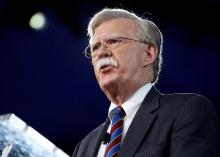
John Bolton is a menace, a “warmongering lunatic” writes Damon Linker, “a dangerous uber-hawk” in the words of former national security officials Colin Kahl and Jon Wolfsthal. Throughout his career, Bolton has been a consistent advocate for war as an instrument of national policy. He opposes the Iran nuclear deal and dismisses the value of negotiating with North Korea, urging instead the use of military strikes and the policy of regime change.
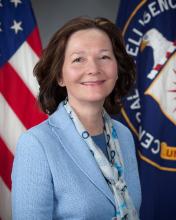
Haspel played a central role in a past torture program of the agency. In the early days of the Bush administration, she famously ran a black-site secret prison in Thailand where detainees were tortured with waterboarding and other inhumane abuse. As the torture program began to come under fire by members of Congress and even some members of the Bush administration, Haspel was involved in destroying evidence of about 100 videotapes of the torture, ensuring that there would be no accountability or record of the torture.

CIA Director John Brennan said that if the next president ordered the CIA to resume waterboarding, he would resign, reports The Week.
Waterboarding was banned by President Obama in a 2009 executive order, but the order could theoretically be reversed.

Sudanese Christians and human rights groups are urging the government to produce two clerics, whose location has been unknown since their arrest in December. Hassan Kodi, 49, secretary general of the Sudanese Church of Christ, and another pastor, Telal Ngosi, 44, were detained after attending a Christian conference in Addis Ababa, Ethiopia, in October. The two represented the Sudanese Church of Christ at a meeting to discuss the plight of Christians in Sudan and South Sudan.
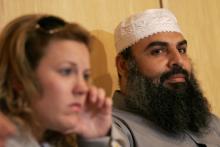
Italy must pay compensation to an Egyptian imam’s family after a European court ruled his human rights had been breached in a C.I.A. operation that had him abducted in Milan and sent to his country of birth where he was tortured. The European Court of Human Rights ordered Italy to pay a total of 115,000 euros ($126,500) in damages and legal expenses to Hassan Mustafa Osama Nasr and his family.
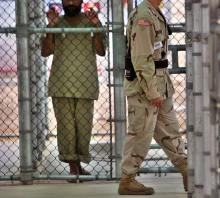
After years of activism and campaigns, religious groups have mixed reactions to the White House’s proposed closure of the Guantanamo Bay military prison. The blueprint for closure, submitted to Congress on Feb. 23 for review, would establish a U.S. location for detainees currently held at the detention facility located at the U.S. naval base in Cuba.

President Obama promised to close the Guantánamo Bay detention facility at the beginning of his presidency. Seven years later — nearly to the day — he released a plan to do it.
“For many years it’s been clear that the detention facility at Guantánamo Bay does not advance our national security,” Obama said.
“It undermines it.”
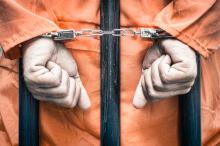
The Pentagon plans to submit a report to Congress on Feb. 23 detailing how to close the Guantánamo Bay detention facility. Navy Capt. Jeff Davis said the plan will call for the closure of the prison and offer several different ways to go about doing so.
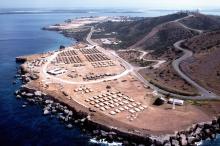
We are in Cuba. More specifically, 14 members of Witness Against Torture are in the Department of Guantanamo, at the Mirador overlooking the U.S. Naval Base. We are being hosted by the staff of La Gobernadora restaurant and lounge. From the lookout, we can see the U.S. base that has occupied more than 100 square kilometers of Cuban land for more than a century. We can orient ourselves toward the camps where the Abd and Mohammed and their brethren are being held. We are camping. We are praying. We are acting. We are transforming a random international tourist spot — one more site to click photos, drink a beer, and move on from before heading to the beaches — into a place to honor and connect and extend ourselves toward the men our nation has demonized and then forgotten.

An independent report commissioned by the American Psychological Association (APA) has found that the association secretly colluded with the Department of Defense and the CIA to weaken the APA’s ethical guidelines and allow psychologists to take part in government torture programs under the Bush administration post-9/11.
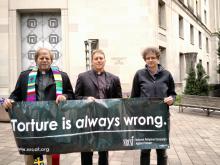
Pastor Seth Kaper-Dale of the Reformed Church of Highland Park, N.J., travelled to Washington, D.C., on June 3 with a simple task: to read the torture report outside the Department of Justice.
“As a pastor, I know that admitting the truth is the first step toward redemption,” said Kaper-Dale.
“When the DOJ admitted in court that it hadn’t even opened, let alone read, the full Torture Report, I knew I had to help the department start the path toward redemption. By reading the report outside the DOJ, I hope to open the hearts of at least a few DOJ employees.”
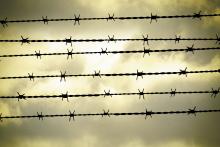
THERE'S NO BETTER sequel to the Senate Select Intelligence Committee’s executive summary of the torture report than Mohamedou Ould Slahi’s newly published Guantánamo Diary. This harrowing tale is only one of what someday will be many direct accounts by victims.
Originally from Mauritania, Slahi, 44, was detained on a journey home in January 2000 and questioned about the so-called Millennium plot to bomb the Los Angeles airport. Slahi admitted that he’d fought against Afghanistan’s communist government with the Mujahideen, at that time supported by the U.S. But he never opposed the United States. Authorities released him. A year and a half later, the young engineer was again detained and again released.
Months later, Slahi drove himself to a local police station to answer questions. This time, Americans forced him onto a CIA plane bound for Jordan, where he claims he was tortured. On Aug. 5, 2002, Americans brought him to Guantánamo. Slahi is among the detainees whose horrific torture there is the centerpiece of the Senate report. None other than then-Secretary of Defense Donald Rumsfeld signed the “special interrogation plan” authorizing his brutal ordeal.

THE SENATE Intelligence Committee finally released in December its long-delayed report on “enhanced interrogation techniques” employed by the CIA in the U.S. global “war on terrorism.” That these techniques—including waterboarding, “rectal feeding,” weeklong sleep deprivation, threats to harm detainees’ children—constituted torture, in clear violation of the Geneva Conventions, is a reality that is difficult to deny. Sen. Dianne Feinstein and her colleagues should be commended for facing and exposing the grim truths behind our nation’s post-9/11 conduct.
Unfortunately, recent polling has revealed some disturbing attitudes among Americans on this issue—particularly among Christians. A Washington Post/ ABC News poll conducted shortly after the Senate report’s release found that 59 percent of Americans believe the CIA’s treatment of suspected terrorists was justified, compared to just 31 percent who believe it was unjustified. Startlingly, among Christians who were polled, that number rises to between 66 percent and 75 percent who believe the techniques were justified. In this same poll, 53 percent of respondents indicated they believe these techniques produced important information that could not have been obtained any other way, compared to just 31 percent who disagree.

I started this year in solitary confinement.
It’s not that I am regularly in prison or that I had behaved so badly. I was simply in a mock solitary cell located in the sanctuary of a church. I was only there for an hour. I knew I would be getting out.
But that hour did offer a glimpse into the world of how solitary confinement is used – and abused – in our nation’s prisons. And it offered a glimpse at the reform efforts that are gaining steam all across the country, including in my home state of Wisconsin.
When Kate Edwards, a Buddhist chaplain who has worked in the Wisconsin prison for the past five-and-half years, closed the door behind me, I was alone, but hardly in silence.